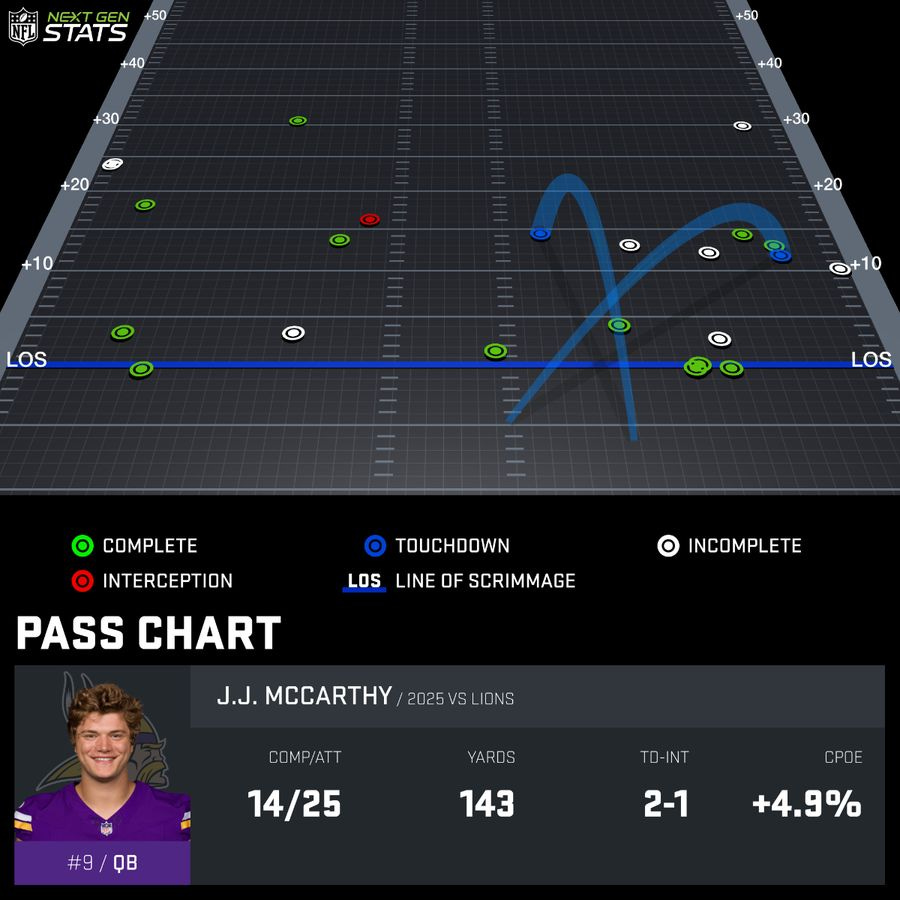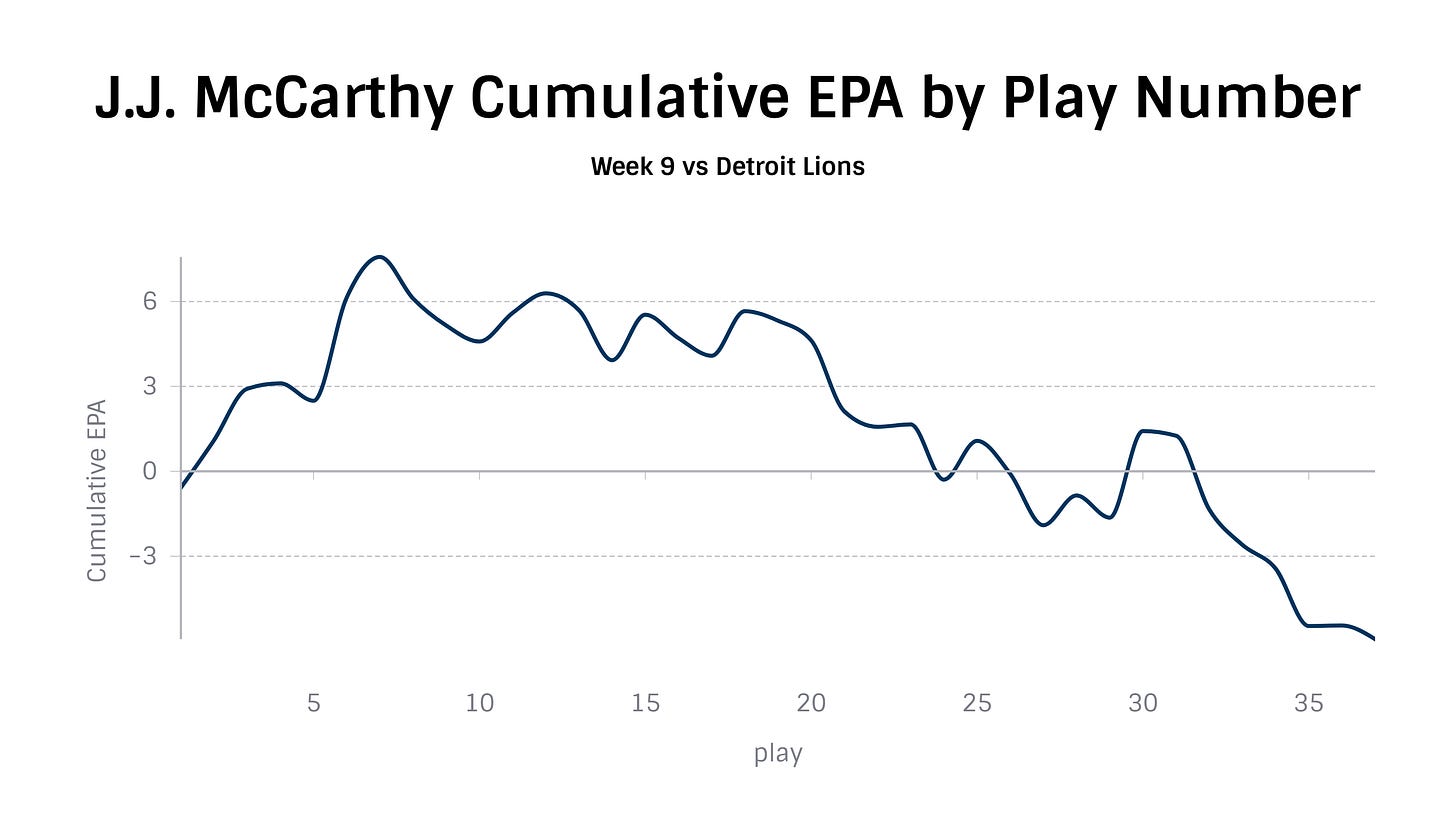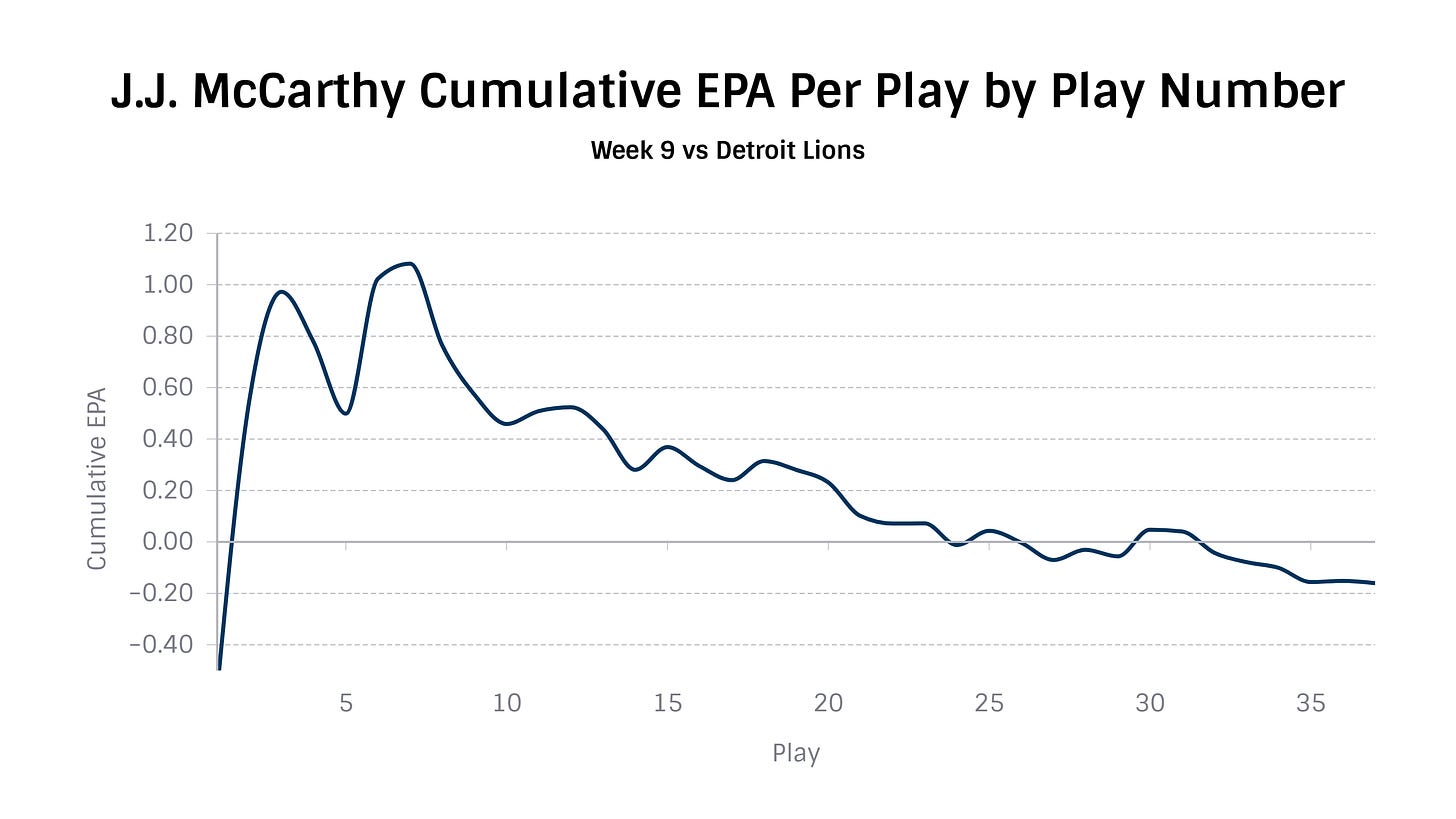Keeping the Faith: Hope Springs Eternal for the Minnesota Vikings, For Better or Worse
The Minnesota Vikings pulled off an extraordinary upset while in control of the game against the Detroit Lions. Is the season turning around?
It has been, perhaps appropriately for the Minnesota Vikings, a rollercoaster season. Just a week prior, an evisceration against the Los Angeles Chargers on national television sapped the life out of the Vikings fanbase, withering hope and inspiring debates about the general manager — and for some, even the head coach.
This week, following a three-point, 27-24 win against a team favored by 9.5 points, the Vikings demonstrated that they might have more in the tank than what we saw at their worst.
The Vikings Offensive Gameplan
The Vikings offense has been a tug-of-war between identity and necessity. They want to be an explosive offense; O’Connell has famously told his quarterbacks to fight their instincts and hold on to the first read longer than typical in any offense, much less the “West Coast” offense the Vikings operate out of.
Quarterbacks regularly have longer times-to-throw with O’Connell than they do with other coordinators or coaches. This is one reason why Sam Darnold led the league in explosive plays last year.
On the other hand, the Vikings offensive line has been a mess. They’ve run through various offensive line configurations and have had virtually zero snaps with the starters they intended to play throughout the season, often playing with just four of those five linemen.
Compounding that problem, they have had a demonic pass-rush schedule that further limits the ability to hold onto the ball—the deeper the pass, generally, the longer one has to wait in the pocket. And the longer one waits in the pocket, the more likely it is that pass rushers will arrive and disrupt the throw.
This push and pull between what the Vikings want to do and what they are limited from doing has defined the first half of the season; the short passes that were successful against the Cleveland Browns and the best pass rush in the NFL did not appear throughout the season, as different defenses demanded different game plans.
In some circumstances, the Vikings would increase their play-action usage, while in others, they prefer a straight dropback to give quarterbacks better vision of the play as it develops.
This time, the Vikings opted for a play-action heavy gameplan that emphasized intermediate passes.
This game featured the second-most play-action dropbacks as a proportion of the Vikings’ total dropbacks and the third-most since 2023. Despite their reputation, the Vikings really haven’t been a very heavy play-action team under O’Connell. With McCarthy, that may change.
This gameplan mostly worked. The Vikings allowed an early score in the first quarter, but after tying the game five minutes in, didn’t fall behind again. They expanded the lead in the third quarter, and that ten-point buffer allowed them to soak up the clock at the end of the game to maintain a lead after giving up a late touchdown.
The primary story of the game, of course, is how J.J. McCarthy performed after a disastrous beginning to his season and five subsequent weeks of injury.
How Did J.J. McCarthy Look?
A win is a win, but that’s not what analysis is for.
The box score doesn’t look kind to him; With 14 completions on 25 attempts, McCarthy finished with a completion rate of just 56.0 percent. More directly relevant to his performance, he generated just 5.72 yards per passing attempt and 3.87 net yards per dropback.
More precisely, he generated minus-0.11 expected points per play per Next Gen Stats and minus-0.16 expected points per play per RBSDM, a 22nd percentile outcome.
Did he play to that level? Not really. There’s a reason his preliminary PFF grade (56.5) is below average but not catastrophic. There’s also a reason it doesn’t feel like that, having watched the game.
McCarthy engineered a stellar drive to begin the game, his lone incompletion coming from a dropped pass on an otherwise perfectly-placed teardrop in the end zone to Jordan Addison. He also suffered from a high pressure rate, something he sometimes overcame with his athleticism and at other times induced with his indecision.
This is not redemption for McCarthy, but it is an improvement.
It can be easy to look at his outstanding early-game performance and take in the final throws and conclude that he is a different quarterback, night-and-day, from the one who struggled so much early in the season. But even accounting for drops, McCarthy’s production and technique faded over time.
In the first quarter, McCarthy generated 7.57 expected points. In quarters two through four, he generated minus-13.5 expected points.
As is the case for many quarterbacks in the middle of their early development, the habits they’ve been training themselves into degraded over time and were replaced by the habits they’ve built over their past several years of play.
It might be a bad-faith interpretation to argue that McCarthy peaked during the Vikings’ first drive, from which it was all downhill; that phrasing feels too dramatic to characterize a regression like this. However, it remains the case that he didn’t maintain that level of play or improve.
McCarthy’s movement through progressions was quick early in the game, but he took more and more time to get off of his first read as the game hit its final moments. As he moved to his later reads, his throws became less accurate, too.
We can see this in the cumulative time-to-throw chart.
There are many reasons one’s time to throw might expand. In this game, for example, McCarthy’s response to pressure was to buy time — not all of his extended pockets invited pressure; they were a response to pressure. Here, ten of his dropbacks produced pressure in under 2.5 seconds.
That means he had a “fast hurry” rate of 32.3 percent. That is the fourth-highest rate of fast hurries per dropback this year, beaten by Jared Goff this week against the Vikings, Justin Herbert against the Giants in Week 4 and Tyrod Taylor against the Buccaneers in Week 3.
That is important context, but it should also be noted that throughout the second and third quarter, we saw McCarthy hesitate after his first read was gone, with production errors following suit. On throws under 2.50 seconds, McCarthy generated 0.50 EPA per dropback. On throws longer than that, he averaged minus-0.43 EPA per dropback.
Quarterbacks tend to overperform on quick throws than on late throws — after all, one throws quick when a receiver is open, but only throws late when the first option isn’t there and choices dwindle. However, compared to his peers, his Week 9 performance ranks in the 17th percentile when throwing late and the 83rd percentile when throwing quickly.
McCarthy’s ball placement seemed to degrade as the contest went on, and inaccuracy — especially behind the receiver — killed drives, and was primarily responsible for the interception that Terrion Arnold snagged.
In the game, McCarthy did enough. He improved over his previous performances. But his play regressed over time — with an excellent back-shoulder throw to Jalen Nailor to close out the contest — and he reverted to his old self as old habits took over.
Whether he can break these habits remains to be seen.
The Rest of the Offense
Blocking and Running
The Vikings offensive line didn’t live up to what the Vikings paid for, even as they had most of who they wanted up front. With the exception of Blake Brandel once again taking over at center in lieu of an injured Ryan Kelly, the Vikings fielded their full complement of linemen.
Keep reading with a 7-day free trial
Subscribe to Wide Left to keep reading this post and get 7 days of free access to the full post archives.








